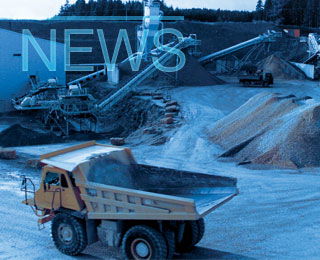The fourth and final day of Cemtech’s decarbonisation conference featured two sessions on the digital plant and energy process optimisation.
The morning began with Javier García Sedano, Optimitive CEO, speaking on real-time optimisation 4.0 of cement factories throughput, energy and quality. He argued the way forward for the cement industry with "RTO-based AI systems using non-linear models learned from process data and automatically updated."
For VRMs, for example, Mr Sedano concluded we could see energy consumption savings of 5-10 per cent for a typical mill in one year of service with throughput increased by 2-9 per cent and quality (fineness) improving by 3-6 per cent.
Marie O'Grady, ABB Global digital sales manager, followed with a presentation on building an intelligent and energy-efficient cement plant. ABB’s aim has been to build solutions to reduce electrical energy consumption, optimise plant use of alternative fuels, and data reporting and production scheduling. Describing the ABB Ability™ Knowledge Manager as a set of tools to convert data into actionable information, Marie Ogrady focussed on the cement production scheduler and how it creates output to satisfy product demand while minimising costs.
Inform’s Head of Road Transport, Dr Paul Flashskampf, gave a different outlook on cement’s future by looking at the logistics side of the business. Having shown that producing 1t of CEM II emits 550-650kg of CO2, whereas delivering two truck loads of CEM II emits 564kg of CO2, Mr Flashskampf detailed ways to reduce the footprint of cement transport. This included reduced empty payloads, removing compressors and sourcing suitable backhauls to the plant, such as fly ash or slag.
The afternoon session which was dedicated to energy process optimisation. It started with a joint presentation from Jens Breidenbach, who leads Process at KHD Humboldt Wedag and Venkatesh Vanam, the company's assistant vice president. They featured how the company has upgraded existing ball mills with highly-efficient roller press-based grinding circuits. The Nuh Cimento plant in Turkey was highlighted with its double Comflex mills that increased capacity from 220tph to 408tph at 4000cm2/g, according to Blaine. In addition, Unique Cement in Bangladesh was equipped with a new roller press and a V and SK separator, added to the existing ball mill that saw production rise to 164.7tph from 75tph and specific power consumption of 21kWh/t was achieved.
The second afternoon presentation was delivered by Riccardo Stoppa, GCP Applied Technologies’ Global Marketing Manager. He expressed how digital and chemical solutions with cement additives can enable clinker and CO2 reduction and highlighted the company’s new OPTEVA® CO2ST® reducers that have been developed to reduce clinker factor further by up to 10 per cent. GCP DASHSM also enables producers to select the right additive for their plant and cement.
Machine Learning and predictive modelling formed the basis of Juliano de Goes Arantes' (Rockwell Automation) presentation. Mr de Goes Arantes outlined the importance of choosing the digital strategies that are right for the cement plant. He admitted that data science used in machine learning may be complex, "but the result for you is simple: better decision-making or greater automation to help optimise your plants."
The final speakers at the conference came from Klüber Lubrication München. Nicolas David, Head of Industries and Alexander Leis, the company’s new business development manager spoke about how plants can become sustainable through the use of lubricants. Klüber Lubrication uses a five-step approach to improve energy efficiency, including the plant audit, measurements, big data software, reporting the benefits, and this results in 'quick-wins'. Mr Leis went on to show how Klüber Lubricants has made savings for customers by building mathematical models from machine learning and simulating power consumption with the existing lubricant measured against the performance of Klüber's lubricant.
